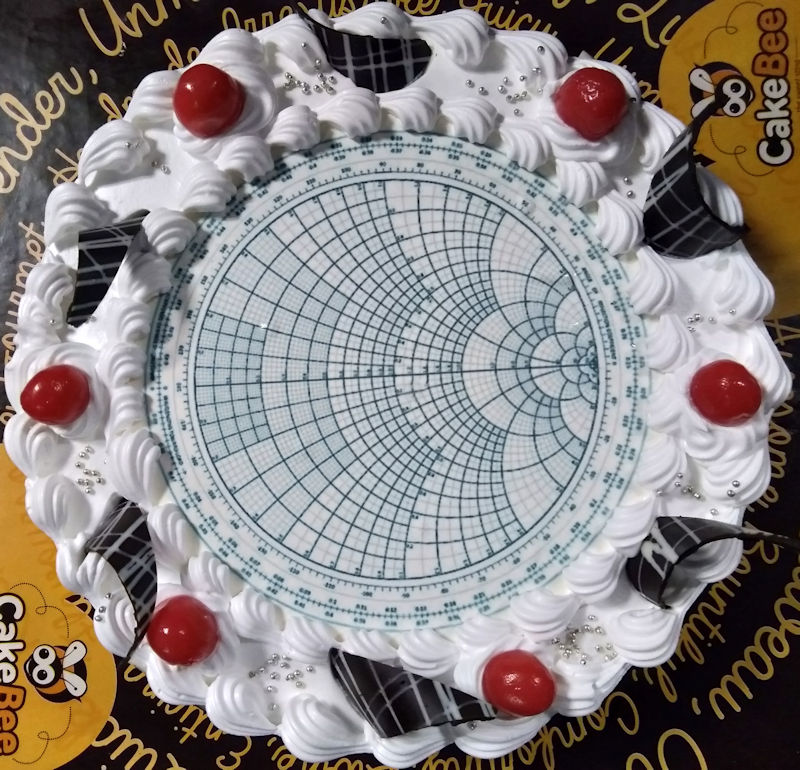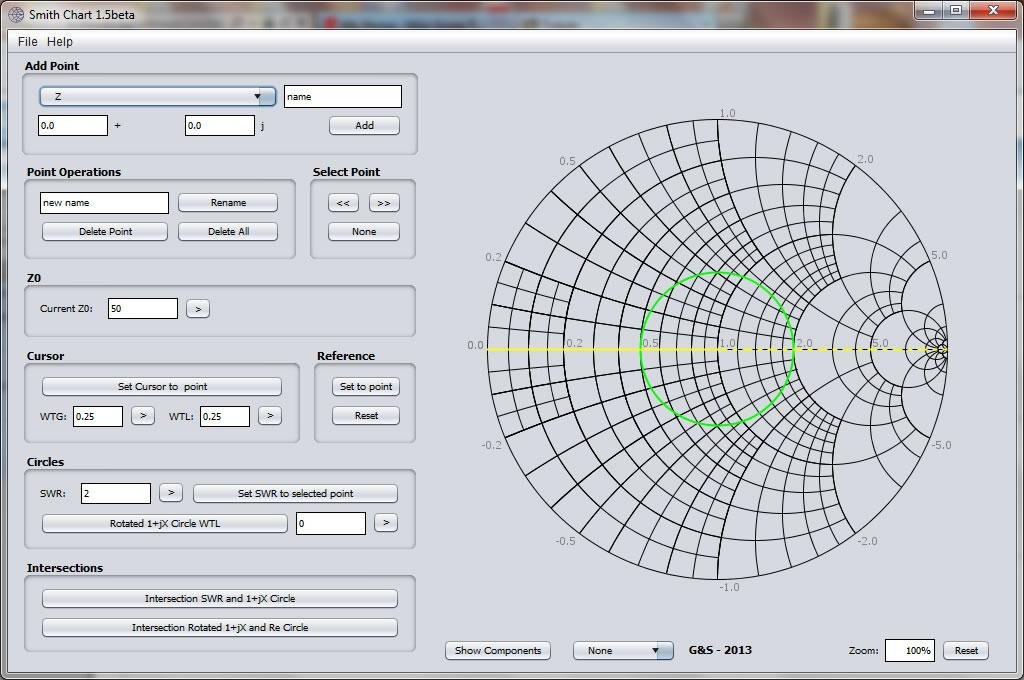

- #THE SMITH CHART PLUS#
- #THE SMITH CHART SERIES#
#THE SMITH CHART SERIES#
Evaluation of effects of shunt and series impedances on the impedance of a transmission line. Evaluation of input reactance or susceptance of open and shorted stubs. Display of s-parameters of a network versus frequency. Display of complex impedances versus frequency. While it is useful and often necessary for designers to know the above parameters, the Smith chart can guide analysis and design decisions including: Shape, position, and phase distribution along with voltage and current standing wave.īut that’s only a part of the power of the Smith chart. Maximum and minimum voltage and current, as well as standing wave ratio (SWR). Power reflection and transmission coefficients. Complex voltage and current transmission coefficients. Complex voltage and current reflection coefficients. Once these complex impedance values are marked on the Smith chart, the chart can be used to identify many parameters which are critical to understanding the RF signal path or transmission line situation including: As an added benefit, the chart also provides a way to show scattering parameters (s-parameters) and how their values relate to actual hardware measurements and considerations.įigure 3: The Smith chart shows arcs of constant resistance (a) and circles of constant reactance (b) which are merged and overlaid (c) to provide a perspective across all impedance possibilities. 
#THE SMITH CHART PLUS#
It succeeds at displaying what may seem at first to be an almost impossible task: the simultaneous graphing of the real and imaginary parts of a complex impedance, where the real part R can range from 0 to infinity (∞) and the imaginary part X can span minus infinity to plus infinity-and do so all on a single sheet of paper.Ī simplified Smith chart, showing its circles of constant resistance and arcs of constant reactance, is a good starting point to understanding its arrangement (Figure 3).

The Smith chart is a polar plot of the complex reflection coefficient (also called gamma and symbolized by rho (Γ)).
Second, even if such power loss is not a concern (although it almost always is), impedance matching is needed to minimize the reflection of energy from the load back to the source, which can damage the source’s output circuitry. Where R is the resistive (real) part of the impedance and X is the reactive (inductive or capacitive) part (Figure 2).įigure 2: A major challenge in RF and transmission line design is ensuring that the source “sees” a load impedance, which is the complex conjugate of the source’s impedance, even if that load impedance is not there. First, to realize maximum power transfer from a source to a load, the source’s complex impedance R S + jX S must equal the complex conjugate R L - jX L of the load impedance:. There are two reasons such matching is critical: His strange-looking circular chart has become the single most useful and powerful tool for working with and optimizing high-frequency circuits with respect to their input and output impedance, even in our age of powerful computers and computer-aided design (CAD) tools.Īmong its many uses, the Smith chart provides an efficient way to visualize design options when trying to match interstage source and load impedances, a very important consideration in many circuits, especially RF design. The chart is named for Phillip Smith, an engineer at Bell Telephone Laboratories, who devised and refined it between 19 while working on understanding transmission lines and standing waves at what was then considered “high frequencies” of up to 1 MHz (called megacycles per second in those days). These graphs, called Smith charts, are very different than anything seen in algebra or statistics classes, no doubt of that.įigure 1: Many RF component data sheets include Smith charts showing the values of key parameters at different operating frequencies, such as these for the Maxim MAX2472 VCO buffer amplifier at 600, 900, 1900, and 2400 MHz. 
Novice designers doing RF design and trying to make a direct connection between two components-for example, from a voltage-controlled oscillator (VCO) to a mixer-have undoubtedly come across strange, circular graphs on component data sheets, such as these for the Maxim Integrated MAX2472, a 500-to-2500 megahertz (MHz) VCO buffer amplifier (Figure 1).








 0 kommentar(er)
0 kommentar(er)
